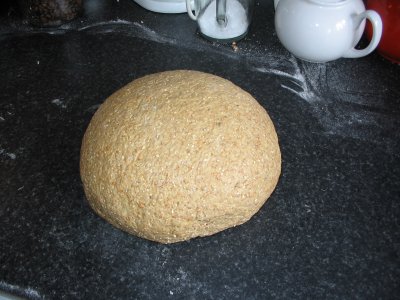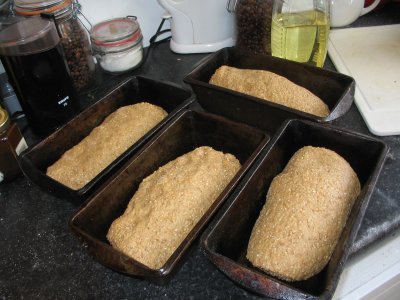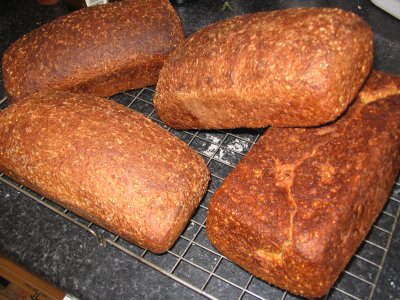Bill Mosse in Kells Mills in the middle of Bennetsbridge village stone grinds the most magnificent flour. On Myrtle Allen’s suggestion the food committee of Euro-Toques visited him a few years ago. Bill took us on an intense tour of his mill and gave us samples of his flour to take away. The improvement in my soda bread in the restaurant when using Bills “Retail Coarse” flour was remarkable.
I continued to use this flour in my soda bread as long as the restaurant was in opereation. We gave Bill an award for a quality food product that year but he is someone that is not really interested in getting involved in the retail trade. You will have to go to the mill itself (Its in the middle of Bennetsbridge) to buy some.
Do I beg you, it is well worth it. My Brown Soda Bread is very simply made using this flour but I have also discovered that if mixed with a certain proportion of strong flour (to provide the gluten) it makes a wonderfully nutty brown yeast bread. Because his flour is so difficult to get I havn’t published this anywhere before now. Note I have also added treacle, malt and a little buttermilk to the recipe( not to mention pinhead oatmeal for the crunch factor and wheat germ just for the heck of it ). The more I add to it the more I am enjoying the taste.
However since this loaf has now become Sile and my daily bread await further developments as I find I am constantly changing it.
Give it a go.
You’ll find it difficult to buy another shop loaf.
Bennetsbridge Brown Yeast Bread
Made from “Retail Coarse” from Bill Mosse’s Kells Mills in Bennetsbridge.
These proportions being uniquely for that flour which seems to need an incredible amount of flour to absorb that much water (but its well worth it.)
For 4x 1kg (2lb.) Loaf Tins
900g (2lbs) Kells Mills Retail Coarse
900g (2lbs.) Strong White Flour
110g (4 oz.) Pinhead Oatmeal
60g (2 oz.) Wheat Germ
4 Tablespoons Buttermilk
1 teaspoon Salt
2 X 7g (¼ oz.) Packets Dried Yeast
1 Tablespoon Black Molasses
2 Tablespoons Malt Extract
1.25ltrs (2 pt. 2oz.) Warm Water
Make sure your hands are spotless.
This is very hands-on cooking.
Mix the two flours, the oatmeal, the wheatgerm, the salt and the yeast together.
Measure the warm water in a jug and dissolve the molasses and malt in this. Mix this and the buttermilk into the flour.
In the bowl mix these together well with your hands until you feel the dough coming together.

The dough before kneading
Tip on to a board and knead thoroughly for 6 mts (time yourself)
Keep the white flour handy to sprinkle on more if it gets too sticky.

The kneaded dough
You will end up with a large lump of dough roughly 3.4kg (7 ½ lbs) in weight.
Oil four loaf tins well. Divide the mixture into four loaves, sprinkle with brown flour and leave to rise and prove in a warm place for 1 hour.

The loaves before proving
(Covered on top of a very low oven or in a –not too well lagged – hot press.If you leave it somewhere cooler it will take longer, but be none the worse for that.)
When the bread has risen well over the top of the tin it is risen and ready to bake.

The loaves after proving
Pre-heat the oven to 220C, 425F, gas 7.
Cook the bread for 30 to 45 mts at that heat.(Timing depends on the oven)
Leave them in their tins for a few minutes when you take them out of the oven. Then they should slip out of the tin easily.

The finished bread
Knock the loaf on the bottom, if it doesn’t sound hollow put it back into the hot oven for another 10 mts or so.
This bread remains fresh for a couple of days and freezes excellently.

Comments
The comments are closed.